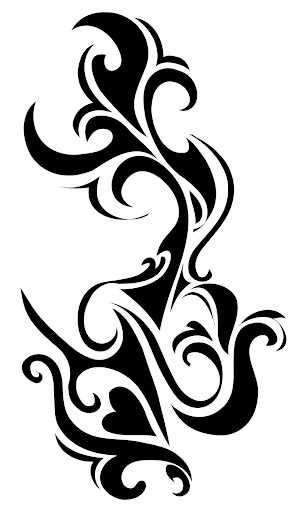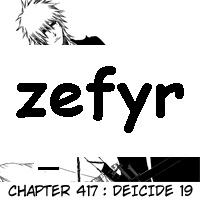Call it the tattoo style of the 90s (and still going strong in the early 2000s). Tribal tattoos have become one of the most in-demand styles of tattooing that exists. It's not hard to see why.
 It is a style that typically capitalizes on solid black lines and coloring (with some exceptions of course) and it is also composed of pointed and curved elements. It's bold and eye catching. In short, it's a pretty wicked looking style.
It is a style that typically capitalizes on solid black lines and coloring (with some exceptions of course) and it is also composed of pointed and curved elements. It's bold and eye catching. In short, it's a pretty wicked looking style.The design at left is known as the aso and is a tattoo design that was done on the island of Borneo by the Dayak people. It is thought to represent a mythical beast that was part dog, part dragon.
Of course, on this very same island of Borneo there are other ethnic groups or "tribes" who likely wouldn't have used this design for a tattoo. The Borneo rosette, which is part of the TattooSymbol.com logo, is a nice example of a traditional Borneo tattoo symbol which bears little resemblance to the type of tattoo design at left.
If there are a handful of different tribes on Borneo (which there are) then in Polynesia there are likely hundreds (which there are).
So, when people say "tribal tattoo", which tribe would that be? It's no tribe in particular, which is the problem. It's a term that is somewhat misleading.
The tribal style of tattooing finds its roots in Polynesia but there is no one tribe there to which we can look for the types of designs flourishing in tattoo studios everywhere today. Instead, the tribal style of tattooing is one that is inspired by those that have traditionally been done in Polynesia for thousands of years. Below is a photograph that was taken by Frances Hubbard Flaherty in Samoa in 1923. She and her husband were already famous for their film “Nanook of the North” which debuted in 1922 and was widely shown and praised as the first full-length, anthropological documentary in cinema history.
This photograph was taken during the filming of “Moana of the South Seas: A Romance of the Golden Age”. It depicts the tufuga or tattoo artist at work. Here he is seen starting to place the first design, known as the tua stripe, onto the person’s back. His assistants sit at the ready.
Much of Samoan tattooing is linear and geometric – not at all like the design above. It's also interesting to note that many of the cultures in the South Pacific did not traditionally tattoo arm bands, per se.

Of course, part of the allure of using a word like "tribal" are the connotations that it carries: something traditional, a sense of something primal, perhaps even something more authentic and closer to the origins of tattooing.
However, tattooing has been practiced in pretty much every part of the globe, perhaps going back to the dawn of modern humans. When you look back on the very long and varied history of tattooing, it doesn't make a lot of sense to call one particular style of tattooing "tribal" or associate it with one particular part of the globe.
Then again, what would we call it, this Polynesian inspired type of tattoo design? "Polynesian inspired" is a mouthful. "Black graphic" tattoo could describe it, but it could also describe some other types of tattooing too. The types of tribal tattoo designs being done today are not necessarily "traditional" either, as in the case of a tribal arm band, so that word doesn't seem quite right either.
Perhaps we'll just have to be satisfied with the words "tribal tattoo" after all. Modern masters of the form are taking it to new heights of aesthetic achievement and it's staying power seems strong yet. Perhaps we can just agree that the tribal tattoo really has no specific tribe, other than the tribe of the inked.

No comments:
Post a Comment